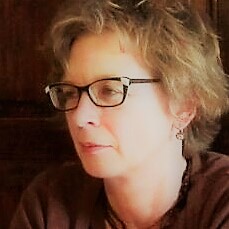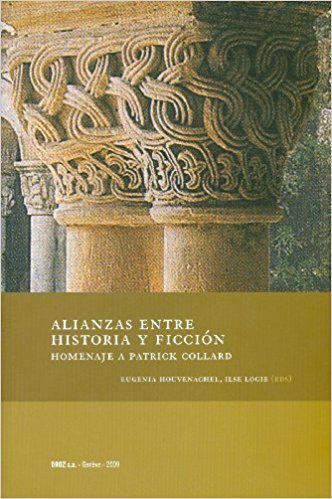
Featured Member: Ilse Logie
Featured Member shines a spotlight on the diverse research interests of, and the exciting projects undertaken by, those affiliated with the Cultural Memory Studies Initiative. In this second instalment of the series, we speak to Prof. Ilse Logie, who has been researching and teaching Latin American literature at Ghent University since 2005. She is an expert on the representation of violence and literary translation, and has published widely on contemporary Argentinian and Chilean literature, including the work of Manuel Puig, Roberto Bolaño, Jorge Luis Borges, Julio Cortázar, and Juan José Saer.
What first attracted you to studying Latin American literature, and how did this lead you to develop an interest in memory studies?
When I was studying Romance philology, I picked Spanish as a second language. In the eighties, Latin American literature captured the imagination much more than Spanish literature, which was still freeing itself from the Franco regime. That is why we read the ground-breaking novels of Boom authors such as Gabriel García Márquez, Julio Cortázar, Mario Vargas Llosa, and Carlos Fuentes—the latter was actually the topic of my Master’s thesis. But when I really started digging into that literature and began my doctoral dissertation on Manuel Puig, I was confronted with the subcontinent’s violent history: the deep wounds inflicted by colonization, but also the failure of the utopian project of the Revolution during the Cold War. From the 1970s onwards, Latin America almost entirely fell prey to dictatorships and severe repression. A great number of authors, including Puig, were forced into exile, while others ended up incarcerated or simply “disappeared,” which is why studying Latin American literature almost automatically leads to an interest in memory studies. And now that political circumstances have changed and violence has become an outgrowth of unbridled capitalism, memory studies can provide a better understanding of the cultural production of, say, the Latinos taking refuge in the United States.
that political circumstances have changed and violence has become an outgrowth of unbridled capitalism, memory studies can provide a better understanding of the cultural production of, say, the Latinos taking refuge in the United States.
Are there any specific texts, concepts, or methods from memory studies that you have found particularly useful?
The concept of postmemory has fascinated me for quite some time. I was especially interested in Marianne Hirsch’s work on the second generation’s memory modalities, but the comparison with the context of the Holocaust, on which her research is based, and the Latin American context also helped me to better understand the specific nature of representations in my field. One should, of course, distinguish between several regions: the involvement of the children of militants against Pinochet’s regime is much more political than that of the descendants of the Peruvian Shining Path’s victims. Despite numerous differences between all of these contexts, the category of postmemory is definitely useful when it comes to identifying certain fundamentals of the “literatura de los hijos” (e.g., the prevalent visual aspect). Michael Rothberg’s notion of multidirectional memory is also relevant: stories about the Latin American dictatorships often refer to the Holocaust because of this genocide’s paradigmatic value, but there is also the association with colonial and postcolonial violence. I especially like Rothberg’s plea for integrating memory in a transnational perspective rather than seeing it as a competitive zero-sum game.
Have you experienced any tensions when applying Western models and frameworks of memory to the Latin American context?
Latin America is part of Western culture, even though it is still inhabited by large indigenous communities with a different worldview. That is why I think it would be better to call the prevailing models Anglo-Saxon. There is a tendency—especially in the US—to blindly apply certain frameworks related to trauma and memory to Latin America, which can distort things. This decontextualization quite rightly leads to irritation. It is important, therefore, for Anglophone academia not to supersede all others.
Language is a major obstacle, as Latin American scholarly publications are almost exclusively written in Spanish, which can be restrictive sometimes. Not all major texts in the field of memory studies have been translated into Spanish. Conversely, some important research by Latin American scholars isn’t available in English (e.g., Pilar Calveiro’s work), which explains the rather limited interaction between both circuits.
I also want to mention the transatlantic exchanges regarding memory studies. The stagnation Spain was undergoing led to terms migrating from Latin America to Europe: the forensic anthropologists who helped open the Spanish Civil War mass graves a couple of years ago came from Guatemala, while the term “desaparecido,” used in Spain, was initially coined in Argentina. These are precisely the dynamics we should seek to stimulate.
You also work on literary translation. Is your research in this area entirely separate from your memory work, or would you say that these two interests are connected and feed off of one another?
These are, of course, different fields of research as such, but my interest in literary translation is of a hermeneutic nature: each translation is based on an interpretation. There is simply no genuine original; the reader brings the text to life. My interest also arose from my research into the concept of mimesis: what is considered, according to our culture, to be an original product and what a derived product? How were different types of imitation appreciated over time and why? I mainly study authors who were forced into exile, some of whom started writing in another language or have at least thought about what their language means to them as a subject. So there are indeed certain intersections, as the project I am currently working on (which I will have more to say about later) shows.
You are a member not only of CMSI but also of CLIV (Centre for Literature in Translation) and of the international network Red VYRAL (Violencia y Representación en América Latina). How important are these collaborative initiatives to your work?
Such networks are really essential to me. I’m a strong advocate of sharing and exploring ideas through dialogue. The expertise that I have gathered on Latin America over the years is largely thanks to the interactions I had at conferences or seminars with other Latin Americanists and especially with the VYRAL people. This contact with the field has helped me—an outsider after all—to have a more nuanced view. The fact is that the Belgian universities lack critical mass in terms of research on Latin America, as they consider this a peripheral area of expertise. On the other hand, CMSI’s talks and reading groups have helped me discover theories on memory that were hardly known in Latin American studies when I started out in Ghent. Such bridges can be our strength as European researchers. CLIV also helps me keep up with what’s happening in the area of translation research.
Could you tell us a little about the project that you are currently working on?
Since the beginning of 2017, I have been working on the FWO-funded project Lives in Translation: The Paradoxes of Spanish-American Multilingual Autobiographical Writing 1980-2015. When writing the grant proposal, I set out to connect my two main lines of research, i.e., the representation of violence and literary translation. We intend to study how authors writing in more than one language reflect on this in their work, what strategies they apply, and how their choice of language relates to their identity construction. This is another area where memory plays an important role: the mother tongue is often related to the childhood years, but breaking with that mother tongue can also be a way of dealing with a traumatic past.
Are there any recent or forthcoming conferences or other events that you are particularly enthusiastic about?
On 28 November 2017, CLIV (in collaboration with, among others, CMSI) will be organizing the “Testimony in Translation” symposium, featuring David Bellos as keynote speaker. Testimonies often involve a translator or another mediator who intervenes in the story, but how is this polyphonic structure rendered in the translation of those texts? On 2 February 2018, I will be organizing a seminar on “Trauma y traducción en la narrativa latinoamericana contemporánea.” And I’m also looking forward to a conference that I will be attending in Bogotá in June 2018, for which I’m organizing several panels with the VYRAL colleagues. Colombian literature is currently in the midst of processing the traumas caused by years of (drug-related) violence, which makes it an interesting case.
Interview conducted via email by Holly Brown.
